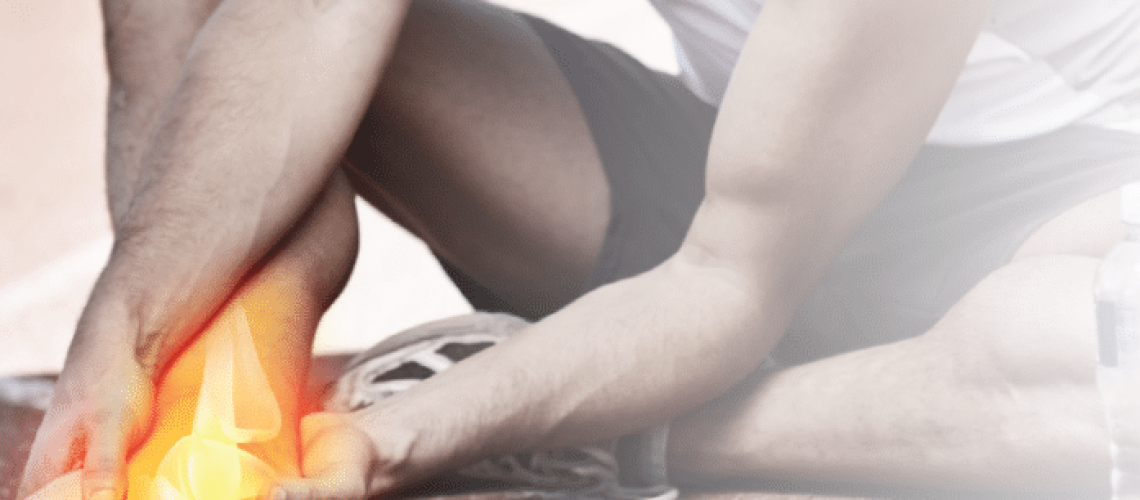
Ankle Sprains
History
- Ability to weight bear
- Mechanism of injury
Examination to exclude associated injuries
- Proximal tibiofibular joint and full length of fibula (high ankle sprain)
- Intra articular ankle pathology – chondral/osteochondral lesions
- Anterior process of calcaneus
- Base of 5th metatarsal
Ankle lateral ligament injury (low ankle sprain)
Low ankle sprain with large haematoma
- Difficulty wt bearing
- Avoid using boot for greater than 1-2 wks
- Need to come out of boot several times per day to do gentle ankle DF stretches to prevent ankle stiffness
- High risk of residual ankle stiffness – may need arthroscopic release
When to refer
- If persistent instability despite 2-3 month course of physiotherapy i.e. unstable despite good peroneal strength and proprioception or good peroneal strength but unable to improve proprioception because of gross lateral ligament instability
- Aim of surgery is to prevent articular damage to the ankle joint and the early development of medial compartment arthritis of the ankle
Surgery – lateral ligament reconstruction
- Immobilise with Aircast stirrup brace or Aircast SP walker boot for 6 weeks post op – wear brace or boot whenever walking outside home
- Commence physiotherapy 2 weeks post op
Special consideration in patients with ankle instability
- Hindfoot varus deformity
- Generalised ligamentous laxity
Syndesmotic ligament injury (high ankle sprain)
- Wide spectrum ranging from mild stable injury to complete diastasis
- Represents 1% of all ankle sprains (Hodgkinson F&A 1990)
- May occur with or without lateral ligament injury (Scranton 2000)
Clinical features
- Anterolateral ankle pain
- Swelling much less prominent
- Pain and swelling more localised than in low ankle sprains
- Pain with push off
- Pain with ankle dorsiflexion
Investigation
- Plain xray – The most reliable criterion for a syndesmotic injury is a tibiofibular clear space on the AP view of more than 6mm in adults (Pneumaticos SG et al F&A Int 2002)
- MRI scan
Natural history
- Prolonged recovery time – twice as long as that of low ankle sprain
- Residual symptoms such as stiffness
Treatment
Stable – physiotherapy
Unstable
- Surgery with insertion of a Tightrope/Zip Tight.
- No fracture – may weight bear as tolerated from week 2 to 6 week in a walker boot.
- Fracture – non weight bearing for 6 week in a walker boot.
- Out of boot and commence physiotherapy after 6 weeks
- May start running when able to perform knee to wall within 2cm of contralateral ankle – usually after 10 weeks post op.
Chondral or Osteochondral injury
Clinical Features
- Pain and swelling in ankle
- Start up pain, pain worse with stairs
- Localised joint line tenderness
Investigations
- Xray
- MRI scan (Most useful investigation)
Treatment
- Physiotherapy
- Surgery – arthroscopic debridement followed by physiotherapy
- Day surgery procedure
- Weight bear as tolerated and crutches for 1-3 days
- Change of dressing after 5 days
- Home stretching program after 5 days
- Physiotherapy from 2 weeks
When to refer for surgery
- If persistent pain despite 2-3 month course of physiotherapy
Anterolateral ankle soft tissue impingement (Meniscoid lesion)
- May become painful following an ankle sprain
- Synovitis
- Meniscoid lesion – Thickening and scarring of the anterior inferior tibiofibular ligament
Clinical features
- ankle effusion, anterolateral joint tenderness
Treatment
- physiotherapy, injection, arthroscopic debridement
When to refer for surgery
- If persistent pain despite a 2-3 month course of physiotherapy and did not respond to a trial of corticosteroid injection into the ankle
Surgery
- Commence physiotherapy within 2 weeks post surgery to reduce post-surgical scarring as post-surgical scarring could lead to the development of similar symptoms.
- Intensive home stretching program 10min 3x per day
Anterior ankle bony impingement
- Recurrent ankle instability
- Common in soccer, basketball, dancing
Clinical features
- anterior ankle pain
- pain with squatting, running uphill or stairs
- exacerbated by landings and take offs from jumps
- tenderness with passive or active dorsiflexion of the ankle
Investigations
- xray – bony impingement
- CT scan
- MRI – helpful in excluding other ankle pathology
When to refer for surgery
- If persistent painful anterior bony impingement pain despite a 2 month course of physiotherapy and relative rest.
- Corticosteroid injection usually helps transiently eg helps get football player through season for surgery during the off season.
Treatment
- Arthroscopic debridement
- Commence physiotherapy 1 week post surgery to reduce post-surgical scarring as post-surgical scarring could lead to the development of similar symptoms.
- Aggressive home stretching program is required to maintain the improvement in the ankle dorsiflexion range following removal of the anterior impingement spurs.
- Surgery is NOT recommended for painless anterior bony ankle impingement
Anterior Process of Calcaneus fracture
- Occurs when the foot is adducted and plantarflexed
- It is an avulsion fracture of the bifurcate ligament
Clinical features
- Pain and tenderness in region of sinus tarsi
- Point of maximal tenderness is 2cm anterior and 1cm inferior to the ATFL
Treatment
- Aircast SP walker boot for 4-6 weeks followed by physiotherapy – boot off for shower, bed and to do gentle ankle range of motion exercises
Occasionally patient may develop persistent pain localized to the fracture site despite a trial of immobilization and physiotherapy. If this occurs then surgery to excise the fragment is required. If the fragment is large and there is a non union then open reduction and internal fixation may be required
Lateral Process of Talus fracture
- Localised pain, swelling and bruising anterior to the lateral malleolus
- Plain x ray may not show the fracture
- Bone scan and CT scan for diagnosis
- This fracture is frequently diagnosed late in patients with presumptive diagnosis of an ankle sprain but have chronic pain
- If the fracture is undisplaced – Short leg non weight bearing cast or Walker boot for 6 weeks
- If the fracture is displaced – surgery is required
- Prognosis is guarded, as there is a significant risk of developing post-traumatic arthritis of the subtalar joint. This could occur within 12 months of the injury.
Base of 5th Metatarsal fracture
- Treat symptomatically in an Aircast SP walker boot for 4-6 weeks followed by physiotherapy
- Surgery is only required if there is significant displacement
- Differential diagnosis – painful 5th metatarsal apophysis
Posterior ankle impingement from Os trigonum
- Ununited posterolateral tubercle of the talus
- Its incidence varies from 7-13%
- Occurs bilaterally in 33-50% of cases
- Often asymptomatic and the degree of symptom is unrelated to its size
- May become symptomatic after lateral ligament sprain
Clinical Features
- Posterolateral ankle pain
- Pointe work and jumping
- Tenderness
- Posterior impingement test
Investigation
- Xray
- CT scan
- MRI scan
When to refer for surgery
- If persistent posterior impingement pain despite a 2-3 month course of physiotherapy, relative rest +/- a trial of corticosteroid injection in the patient who do not have an os trigonum
Surgery
- Posterior ankle arthroscopy with excision of the os trigonum or the trigonal process
- Post op rehab/physio is similar to anterior ankle scope
- Return to barre class about 4-6 wks post op


